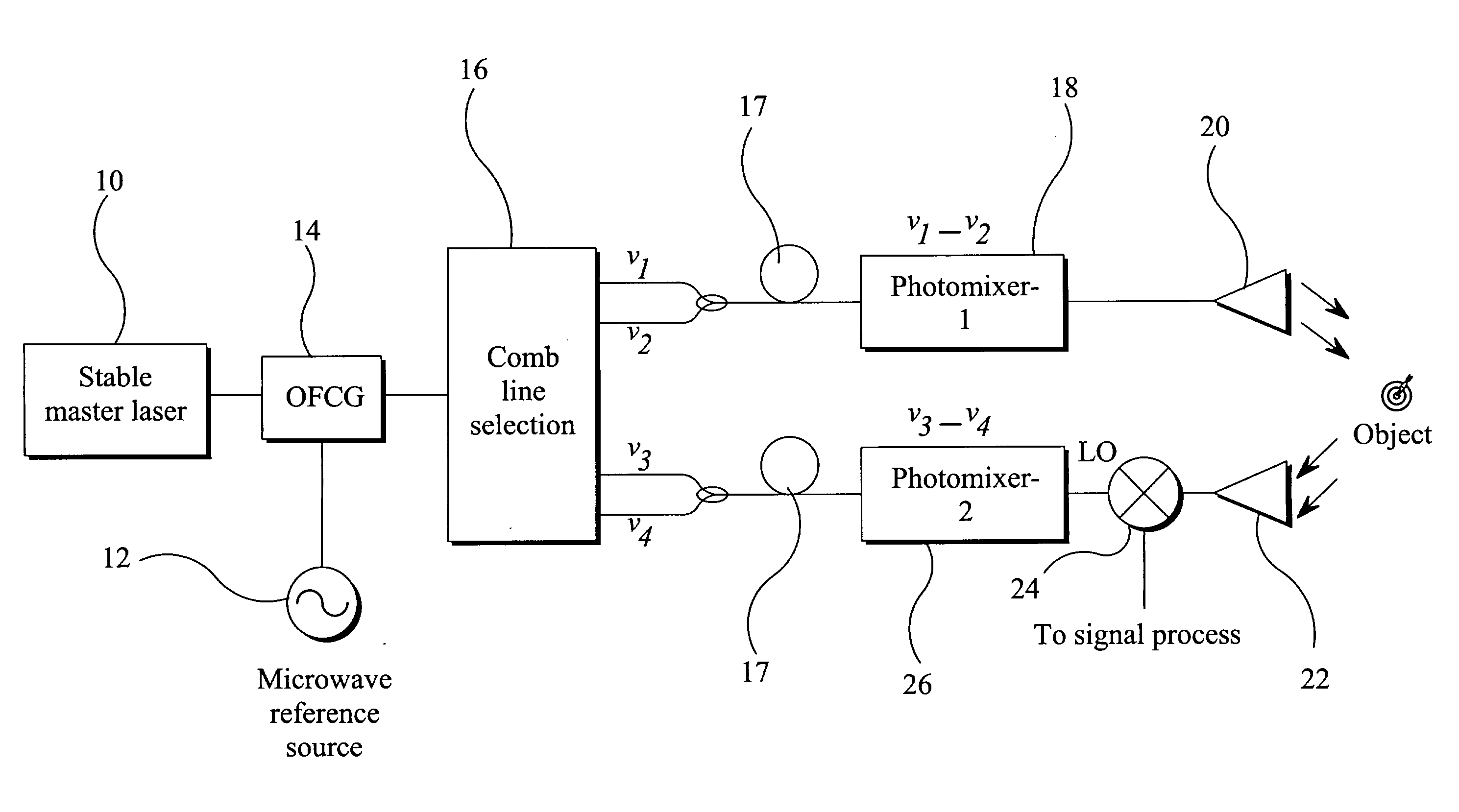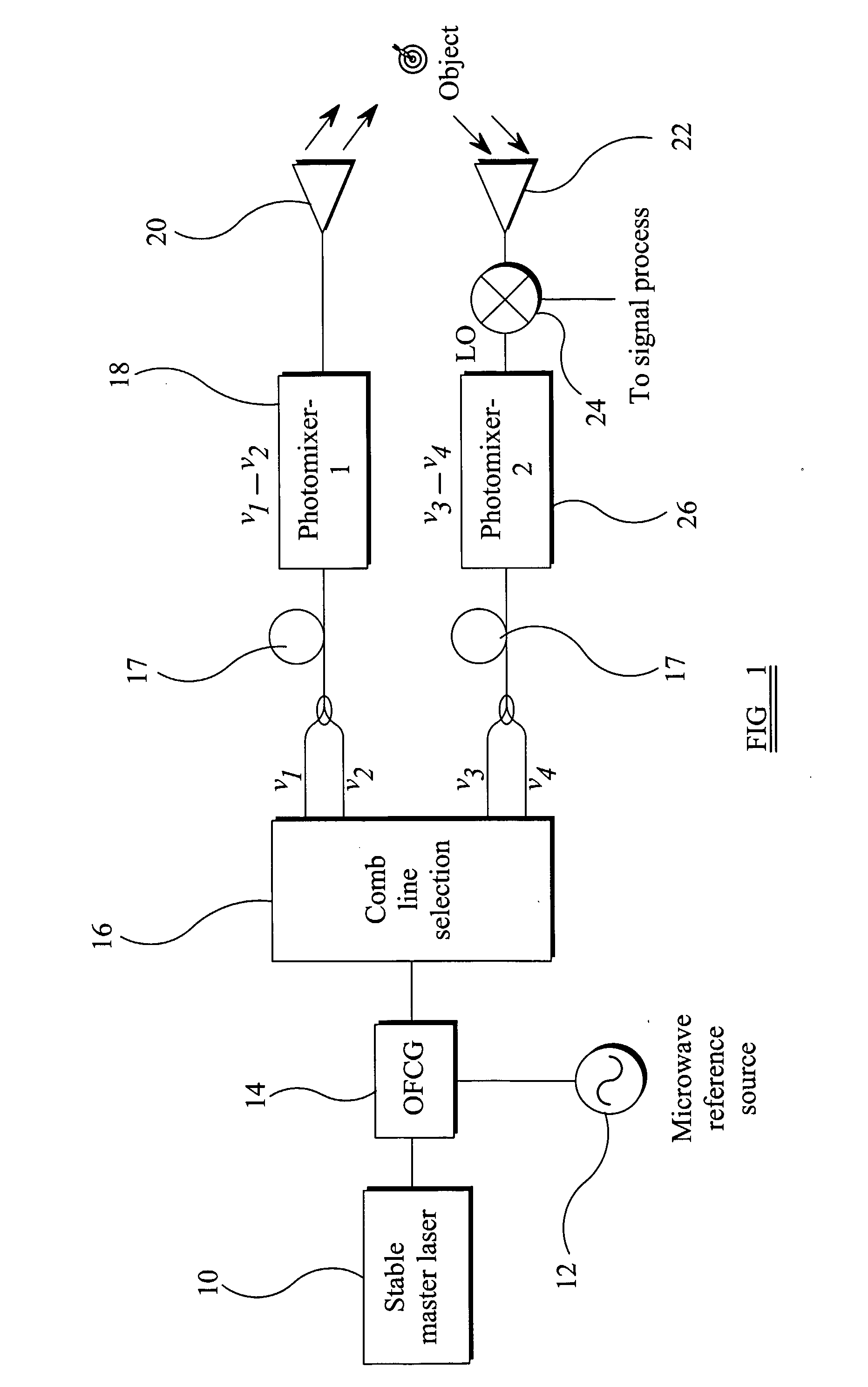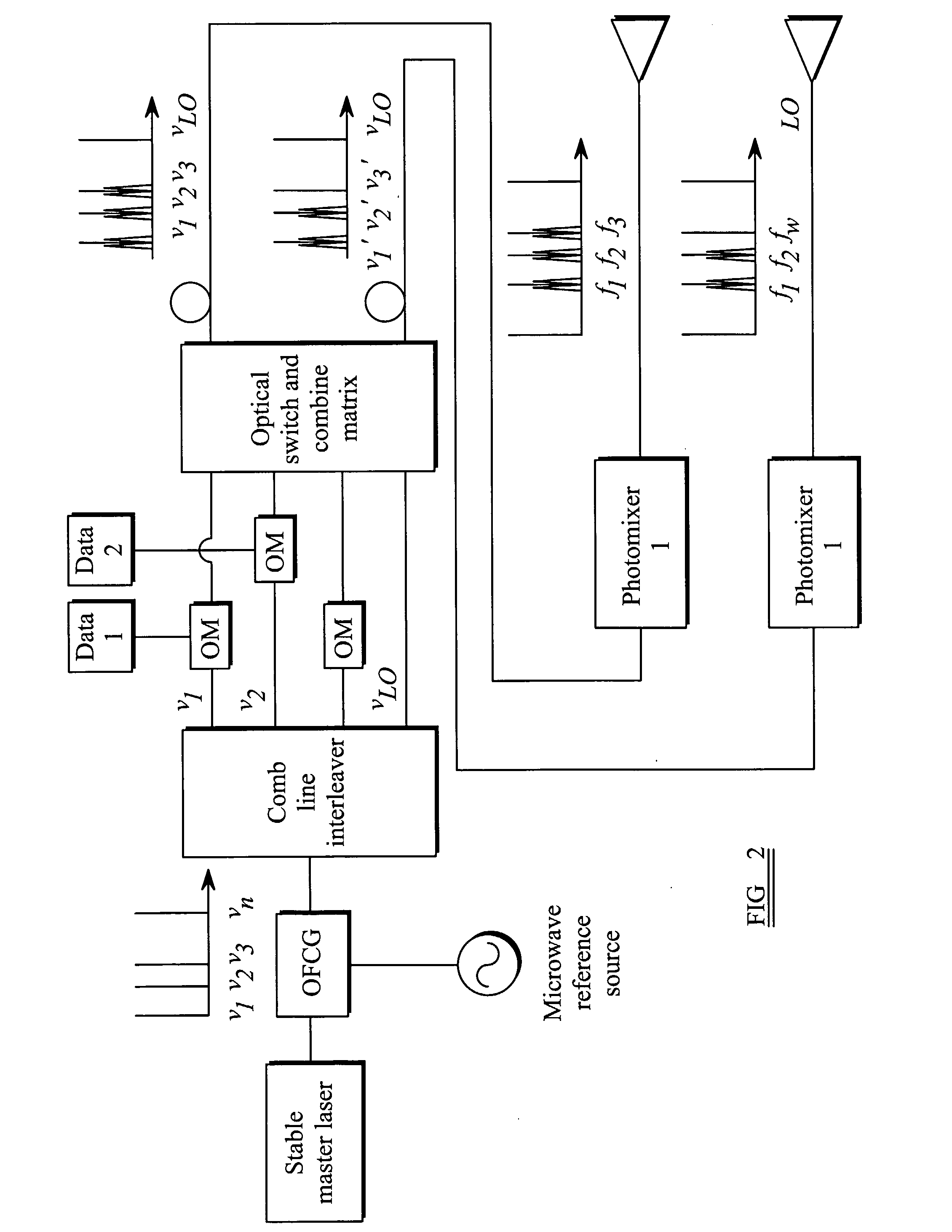Electromagnetic Transmission/Reception System
a transmission/reception system and electromagnetic technology, applied in the field of electromagnetic transmission and reception systems, can solve the problems of thermal effects limited to laser diodes, conventional microwave sources that do not operate at sufficiently high frequency to efficiently produce radiation, and light sources that cannot be bright enough to produce radiation. , to achieve the effect of improving noise performance, stable coherent detection, and facilitating the generation of ultra-low noise signals
- Summary
- Abstract
- Description
- Claims
- Application Information
AI Technical Summary
Benefits of technology
Problems solved by technology
Method used
Image
Examples
Embodiment Construction
[0039]This invention relates to the generation and reception of electromagnetic signals, in which high frequency signals are generated and detected using a laser and a microwave signal source. The microwave signal source is used to generate multiple signals, separated by the microwave frequency. Selected pairs of these signals are combined to generate the desired high frequency signals, and a local oscillator is also generated and used for frequency down-conversion.
[0040]In this way, the invention provides ultra-low-noise signal generation through optical heterodyning. Optical heterodyning is a method for generating high-frequency signals which is limited (in terms of bandwidth and output power) only by the photodetector used. The high-frequency signal generated is the difference frequency between two laser frequencies, and can be easily varied using tunable (e.g. semiconductor) lasers. However, the laser noise will appear in the output difference frequency signal, and this can be v...
PUM
 Login to View More
Login to View More Abstract
Description
Claims
Application Information
 Login to View More
Login to View More - R&D
- Intellectual Property
- Life Sciences
- Materials
- Tech Scout
- Unparalleled Data Quality
- Higher Quality Content
- 60% Fewer Hallucinations
Browse by: Latest US Patents, China's latest patents, Technical Efficacy Thesaurus, Application Domain, Technology Topic, Popular Technical Reports.
© 2025 PatSnap. All rights reserved.Legal|Privacy policy|Modern Slavery Act Transparency Statement|Sitemap|About US| Contact US: help@patsnap.com



